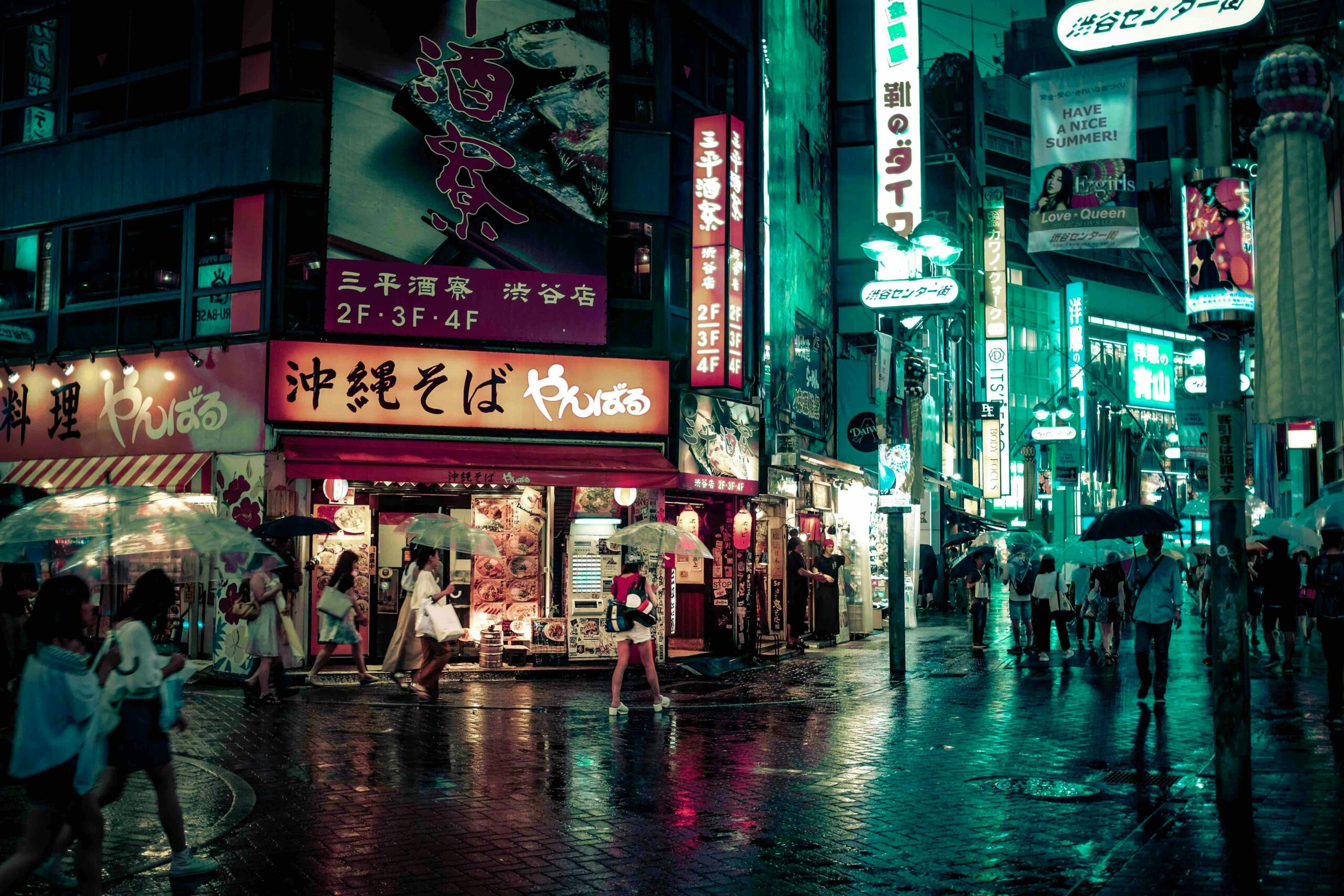Diversity lovers choose Tokyo apartments in vibrant immigrant neighborhoods
Beyond the gleaming skyscrapers and bustling streets, a hidden side of Tokyo thrives – one where immigrants from different corners of the world have carved out their neighborhoods and communities.
These immigrant areas were originally created because housing was cheap and landlords were open to renting to foreigners. Over time, they evolved into places known today as Little India, Chinatown, Little Vietnam, or La Petite France.
Generally, poorer immigrants choose where to live based on three conditions: convenient transportation, low prices for goods and land or rent, and proximity to work and friends.
Even today, most of these areas still offer relatively inexpensive housing options, at least where the foreigners or immigrants cluster.
This blog article covers the major immigrant communities in Tokyo and explains some of their characteristics relevant to foreigners looking for an apartment.
Shin-Okubo: Popular Hub for (South) Koreans and Vietnamese
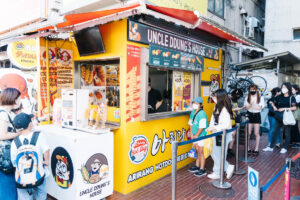
(Source: Dick Thomas Johnson/flickr)
Tokyo’s first Indian Sweets Shop is located at Nishi Kasai Station. This neighborhood, one of the most vibrant ethnic enclaves in Tokyo and even more popular with young Japanese than Shibuya, is located in the North-Eastern part of Shinjuku Ward. Shin-Okubo is conveniently located around the Yamanote Line station of the same name.
To the east of the railroad tracks is Koreatown, the neighborhood originally populated with Koreans who ended up in Japan after the Second World War. It became fashionable for the Japanese with the FIFA World Cup 2002, co-hosted by Japan and South Korea, and the massive popularity of the South Korean television drama Winter Sonata. Today, it is characterized by numerous specialty shops lined with the faces of K-pop stars and restaurants serving Korean cuisine, in particular grilled meat Korea style.
The west side of the Yamanote Line looks more like a traditional immigrant quarter. Residents from Central, South and Southeast Asia make up a significant portion of the population. Many young Vietnamese live here, having come on student visas but keen for work to send money home. Grocery stores are selling exotic spices and vegetables, shops offer money transfer services, and ethnic restaurants promise authentic food. Walking around the neighborhood, you feel as if you are somewhere in Southeast Asia, especially Vietnam.
Nishi-Kasai: Tokyo’s Little India
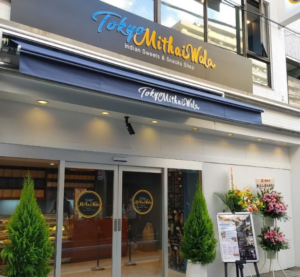
Tokyo’s first shop for Indian Sweets is located next to Nishi Kasai Station
The eastern Tokyo suburb of Nishi-Kasai in the Edogawa Ward close to the sea is about 15 minutes by train from downtown Tokyo on the Tozai subway line. It has been called Japan’s “Little India” because it is home to the largest Indian community in Japan. More than 5,000 Indians, about 10% of the total Indian population in Japan, live around Nishi-Kasai station.
The influx began when many IT engineers, mainly from India, were called to Japan in the late 1990s to fight the “millennium bug” in many computer software programs. Many of these Indian tech specialists stayed in this low-cost area because of its proximity to tech companies in central Tokyo. The Indian population grew rapidly after 2001 with the relaxation of visa requirements for Indian IT engineers.
Despite their skills, many of these specialists had to stay in hotels, “weekly mansions,” or temporary apartments because Japanese landlords were reluctant to rent to Indians. But Jagmohan Chandrani, the “father of Little India”, used his contacts with local real estate agents to help the newcomers find permanent housing. Today, the area is full of Indian supermarkets, restaurants, and specialty shops, and even hosts seasonal Indian festivals.
Takadanobaba (Nishi-Waseda): Myanmas
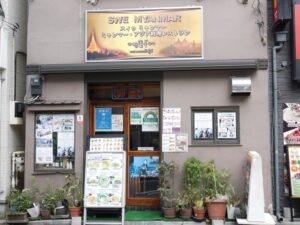
Located near Waseda University in Shinjuku Ward, Takadanobaba is home to a large number of people from Myanmar. The area is also often called Nishi-Waseda. Takadanobaba is also a stop on the Yamanote Line.
Many Myanmar people first came to Japan as refugees fleeing the military dictatorship in their homeland. Their start was difficult because when they apply for asylum they are not allowed to work.
Now, many immigrant-run businesses have sprung up, offering a small taste of Myanmar culture. These include restaurants serving Myanmar cuisine, beauty salons, shops selling traditional ingredients, imported products, and more.
One of the oldest restaurants, Mingaraba, serves a variety of traditional Myanmar dishes. There is also a cultural center that promotes learning about Myanmar culture and offers lessons in language, cuisine, and how to play the saung, a traditional harp instrument.
Ikebukuro: A New Chinatown for Tokyo
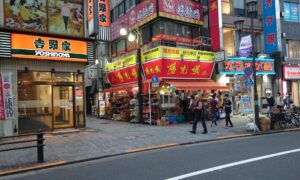
Japan has three relatively large Chinatowns (chūkagai): Yokohama, Nagasaki, and Kobe. All originated as residential areas for Chinese merchants who settled around the ports that were first opened to foreign trade after the end of Japan’s era of seclusion in the late 1800s or earlier.
But recently, Tokyo has increasingly attracted long-term Chinese residents. As a result, a newer “China Town” has developed in north of the Ikebukuro district. These areas were less expensive than the central area of Ikebukuro, which is the main rail hub for northeastern Tokyo.
Chinese author Yang Yi, the first non-Japanese writer to win the prestigious Akutagawa Prize, wrote about the Ikebukuro-Warabi area in her 2008 novel Kingyo Seikatsu (Life with Goldfish), describing how Chinese have lived there since the turn of the century.
Recently, some Chinese residents in Japan prefer to live further north of Ikebukuro, such as Kawaguchi, Nishi-Kawaguchi, and Warabi. Many Chinese restaurants near the train stations offer authentic food from various Chinese regions.
Warabi and Kawaguchi: Kurds
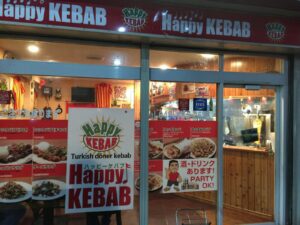
(© Doner Kebab Japan)
Some parts of these two towns in Saitama Prefecture, with two stations on the Keihin Tohoku Line (about 30 minutes to Tokyo Station), have been dubbed “Warabistan” due to the concentration of people of Kurdish origin, often from Turkey, but also from Iraq and Syria.
About 2,500 Kurds who fled their countries for fear of persecution and discrimination are currently living in Japan. According to estimates, about 2,000, or 80%, have settled in Kawaguchi and the neighboring city of Warabi. Up to 1,000 of them are in the process of applying for asylum or have applied.
Warabi and Kawaguchi are very popular living areas. Both stations offer a commute of only 30 minutes to Tokyo Station as well as Shinjuku station, but rents are comparatively low.
Kagurazaka: French
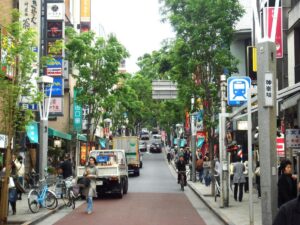
The Kagurazaka and Iidabashi districts of Shinjuku-ku are often referred to as ‘La petite France’, ‘Furansuzaka’ (French Hills in Japanese), or ‘Tokyo’s Little Montmartre’.
These terms are largely due to the influence of a French language school, the Institut Francais Tokyo, a cluster of French restaurants, bookstores, and other shops, and many expatriate residents of French origin. This small area around Iidabashi Station in the easternmost part of Shinjuku makes you feel like you’re in Kyoto and France at the same time.
Due to its central location, rents here are not cheap. Most poor immigrants cannot afford to live here. But if you want a foreign feeling while living in Tokyo, Kagurazaka gives you that distinct Western flavor. At the same time, you can find exclusive geisha houses in Kagurazaka’s traditional back streets, some of the last remnants of Tokyo’s feudal past.
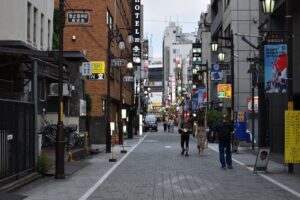
Streets in downtown Tokyo
Did this blog article about vibrant immigrant areas in Tokyo give you new ideas about where to rent an apartment? From Shin-Okubo’s K-pop-adorned streets celebrating South Korean and Vietnamese influences, to Nishi-Kasai’s “Little India” showcasing the vitality of India’s community, each neighborhood tells a tale of resilience, adaptation, and unity.
Takadanobaba’s Myanmarese presence stands as a testament to the power of community support, while Ikebukuro’s Chinese quarter brings a fresh and modern taste of China’s diverse culinary heritage to Tokyo’s doorstep. The unique case of Warabistan exemplifies the challenges and strength of the Kurdish community, while Kagurazaka’s French ambiance adds a touch of European charm to the city. Make your choice!
